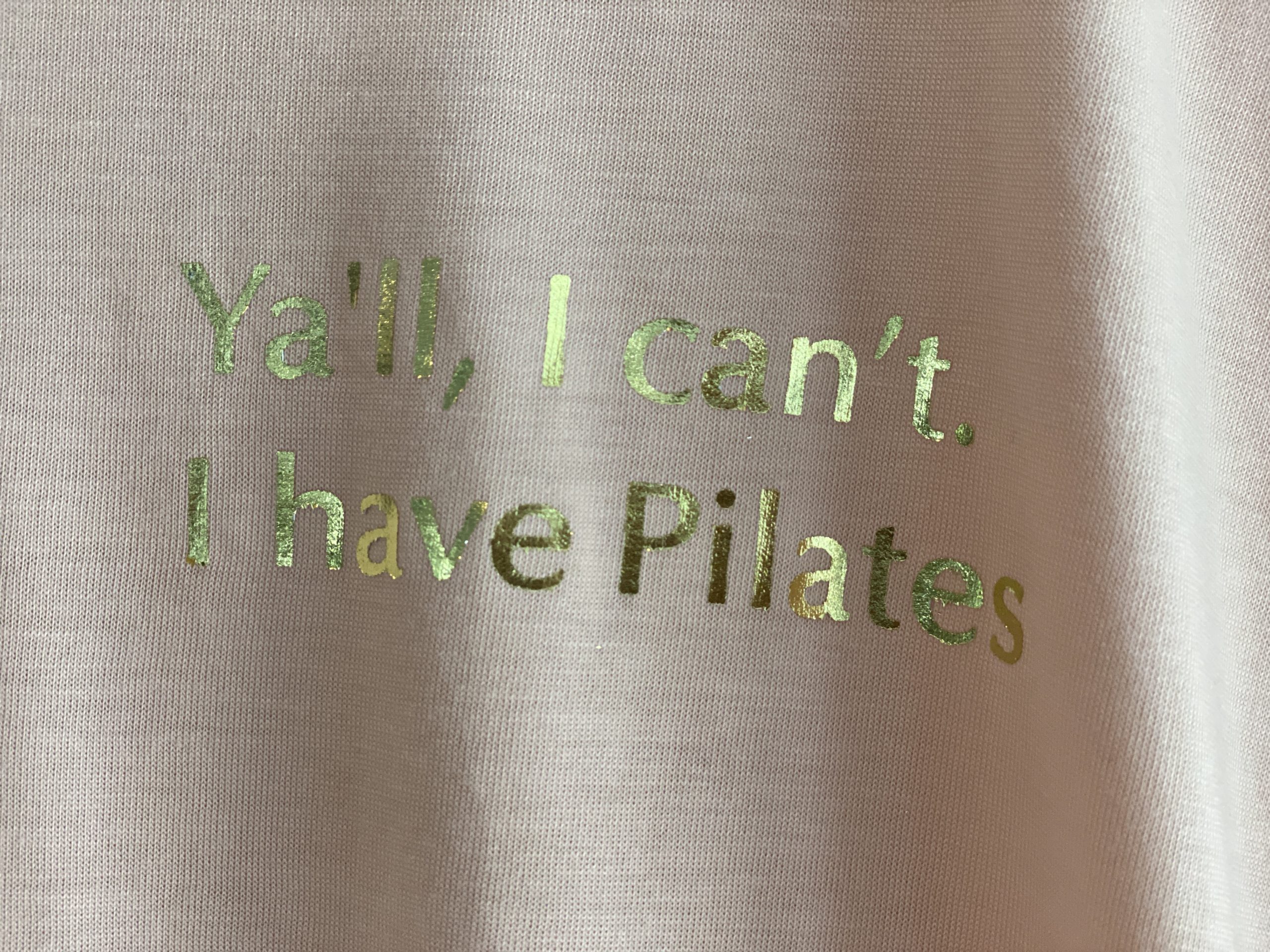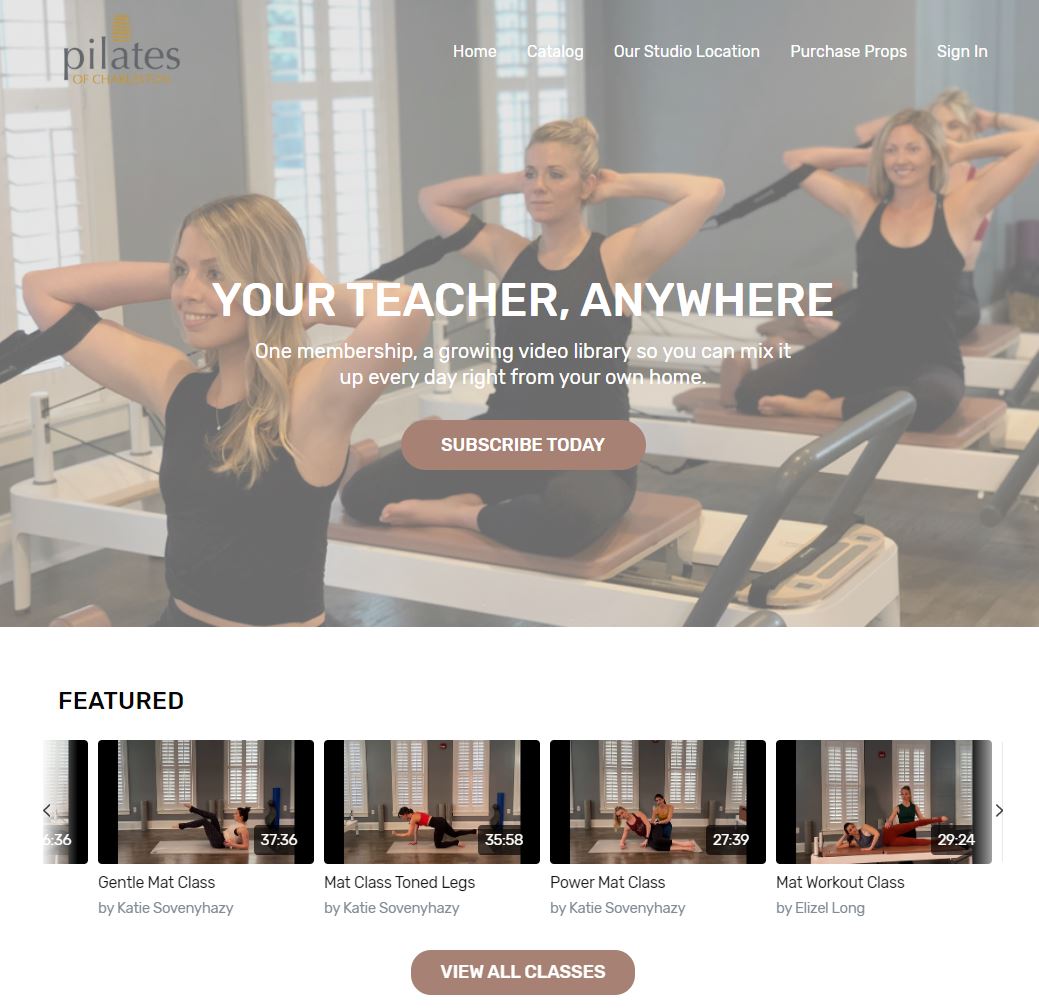I have gone to several Barre classes here in the Charleston area as well as other cities and have a very typical experience one receives while doing class. Large class size… Excited instructors… a great work out…
But being a Pilates instructor, I can’t help looking around and noticing certain things. So many people compare Pilates directly to Barre classes are quick to label them as similar. However, they couldn’t be more different. Many of my clients ask about one versus the other and my advice on the subject. So I did a little research and found several articles that I agreed with… Here are some interesting thoughts that you should pay attention to while doing Pilates or Barre written by Pilates and Barre instructors!
Basically, all barre classes focus on isometric exercises, by moving in a tiny range of motion to work a muscle to exhaustion. They include sections of standing work at the ballet barre to work thighs, glutes, and hips, seated work for abs (including ab work seated under the barre), and usually arm work with small weights (2-5 pounds).
I’ve seen plenty of people who are strong as barre students who struggle doing a teaser or other exercise where you have to properly engage muscles through a full range of motion.Sure, these students can hold a position for a long time, but they’re probably not strong at every position. Although you might be able to hold your leg straight out from your hip for minutes on end, when do you really need to do that in daily life?
Why people like it:
- It’s effective for toning. Isometric exercises are great for toning and shaping muscles.
- It’s a total body workout. In a barre class, you work a little bit of everything.
- It hurts like… well.. a lot. A lot of people are of the “no pain, no gain” opinion of fitness. But suffice it to say, you feel the work when you’re doing isometric exercises. Why? Most exercise scientists agree that when you hold a muscle in a particular position for a length of time, the waste products produced by metabolic processes increase faster than the body can flush them away. Hence, the burn – especially when doing isometric exercise, since that lengthy muscle contraction doesn’t allow the metabolic waste products to disperse quickly.
In terms of barre work, there are exercises I find more effective than others. And it’s important to note, an exercise program based on isometric exercises alone is an incomplete exercise program.
When you build strength at one point of the muscle (the very nature of isometric training) and fail to work the other part of the muscle, you have not developed functional strength.
There’s also the issue of barre classes’ extensive focus on a posterior pelvic tilt. Posterior pelvic tilt is important in many exercises, including those you’ll find in barre, traditional Pilates, and Fuse Pilates. But Pilates focuses on the pelvis in neutral and anterior tilt as well – balancing the muscles around the spine.
Think about your pelvis this way: it connects the upper and lower parts of your body. An exaggerated posterior tilt can cause changes to the structure of the spinal curves potentially causing pain as well as altered movement patterns in the upper and lower parts of the body. A posterior tilted pelvis is also akin to fatigue posture – which looks slouchy. Not pretty.
If that becomes your “permanent setting,” you’ll need a physical therapist or Pilates instructor to set you straight.
I’ve seen the best results from barre classes for people who are very petite and need to gain muscle tone. I’ve had some students complain that their thighs or bums got a little bit more built than they would like. The standing thigh work bothers some people’s knees – regardless of how “low impact” it is. I’ll discuss what parts of barre Fuse incorporates, and what we left out and why, in another post.
Ultimately, if you’re spending a lot of time at the barre, make sure you do some full range of motion workouts, too, and don’t take that posterior pelvis home with you.
check out this link for the full article. Thanks Mariska





